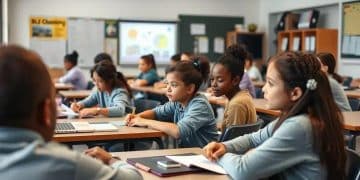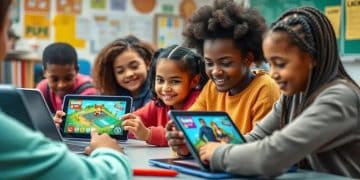Virtual lab simulations trends: revolutionizing education
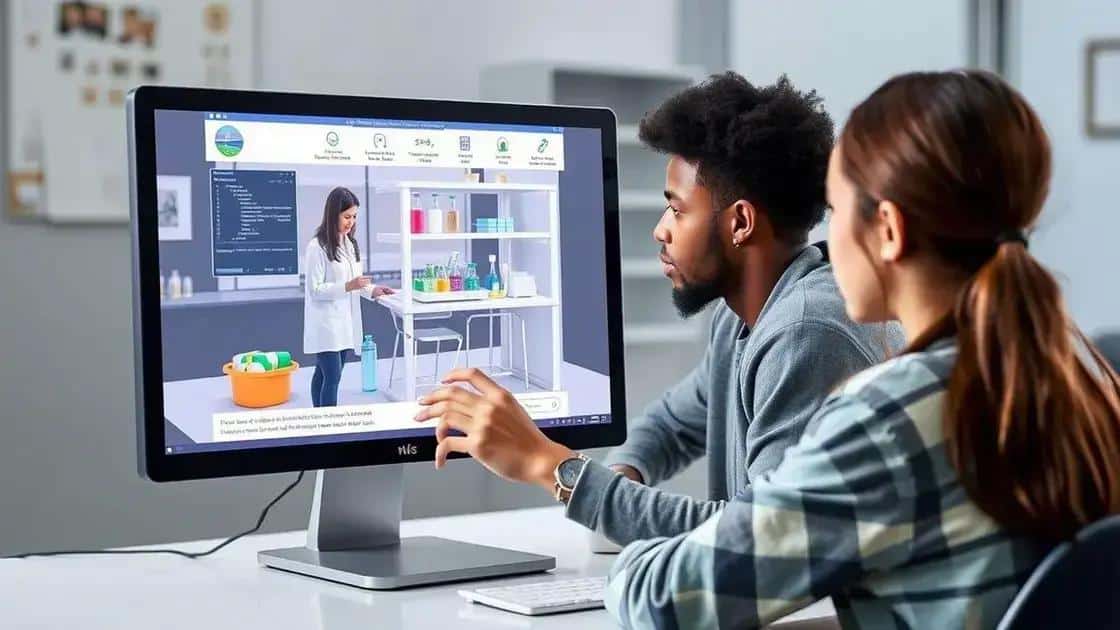
Virtual lab simulations enhance education by providing interactive, accessible, and tailored learning experiences, leveraging technologies like AI and VR to prepare students for real-world applications.
Virtual lab simulations trends are reshaping educational experiences by making complex concepts more tangible and interactive. Have you ever wondered how this technology can benefit your learning journey? Let’s dive in!
Understanding virtual lab simulations
Understanding virtual lab simulations requires grasping their fundamental purpose and capabilities. Virtual labs are interactive environments that allow students to experiment and learn in a safe, controlled space. These simulations replicate real-world scenarios, making complex scientific concepts more accessible and engaging.
Benefits of virtual lab simulations
One of the main advantages is that they provide students with a hands-on experience without the limitations of a physical lab. Students can conduct experiments, analyze data, and draw conclusions with just a click. This flexibility enhances their understanding and retention of information.
- Cost-effective learning opportunities
- Accessibility for remote or underserved students
- Safe experimentation without the risk of accidents
- Immediate feedback and assessment
Another key aspect is that virtual lab simulations foster collaboration. Students can work together, share results, and discuss findings in real-time, even if they are miles apart. This connectivity enhances social interaction and teamwork skills that are crucial in today’s interconnected world.
Types of virtual lab simulations
There are various types of virtual lab simulations available, each designed to cater to different subjects and learning needs. For example, biology students can explore cellular processes, while chemistry students perform chemical reactions. These engaging experiences allow for a deeper level of exploration and creativity in learning.
- Physics simulations for mechanics and dynamics
- Chemistry labs for molecular interactions
- Biology environments for ecological studies
- Engineering scenarios for design and testing
As technology advances, the quality and realism of virtual lab simulations continue to improve. This evolution not only provides better educational resources but also prepares students for a future where digital solutions are increasingly important.
The impact on remote learning
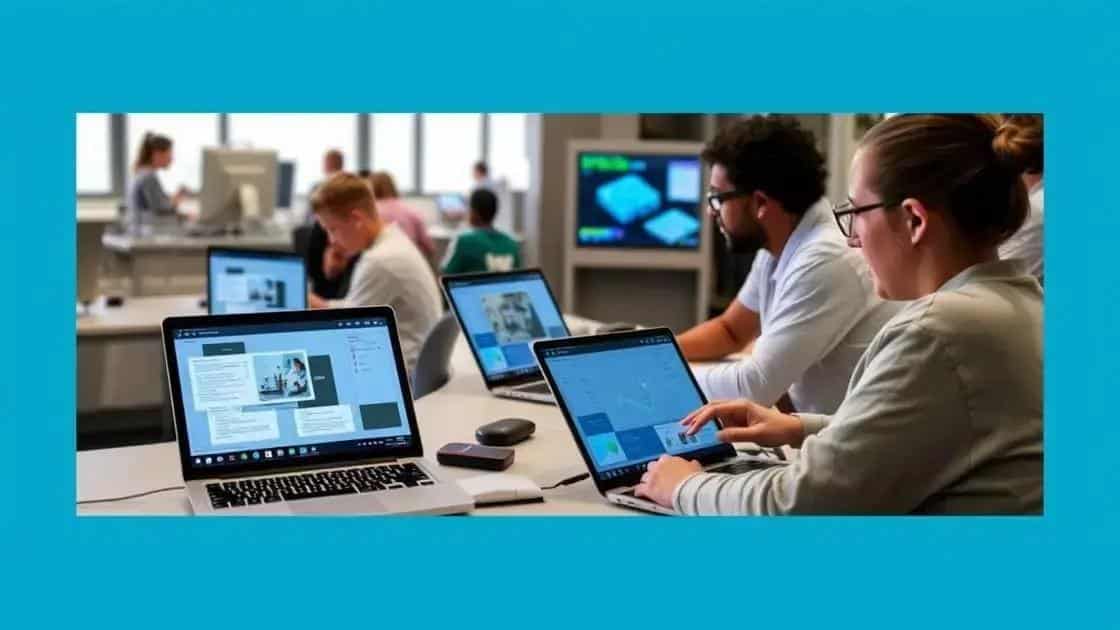
The impact on remote learning has been significant, especially with the rise of technology in education. Virtual lab simulations have transformed how students engage with their studies from home. By providing interactive opportunities, these simulations bridge gaps that traditional learning methods often leave.
Enhancing accessibility
One of the most important effects of virtual labs is that they make learning more accessible. Students from various backgrounds can connect to high-quality resources anytime, anywhere. This flexibility reduces barriers, especially for those in remote or underserved areas.
- Accessible resources for all students
- Flexibility to learn at one’s own pace
- Opportunities for collaboration among peers
- Reduced travel time and costs
In addition to accessibility, virtual lab simulations promote engagement. These engaging platforms captivate students’ attention, leading to improved participation and interest in subjects like science, technology, engineering, and mathematics (STEM). Students can experiment directly, making the learning process active rather than passive.
Improving learning outcomes
Another impact is in enhancing learning outcomes. With the hands-on experience that virtual simulations provide, students can deepen their understanding of complex concepts. They can receive instant feedback on their performance, which is crucial for effective learning. This interactive environment encourages exploration and curiosity.
- Immediate feedback for better understanding
- Encourages analytical thinking and problem-solving
- Promotes retention of knowledge through application
- Fosters a sense of accomplishment
As students navigate these simulations, they develop skills that are essential for future studies and careers. This experience not only prepares them academically but also equips them with practical skills for the real world. The impact on remote learning is clear; it creates a more dynamic and effective educational experience.
Key trends shaping virtual laboratories
Key trends shaping virtual laboratories are essential to understand as they define the future of education. These trends show how technology is evolving and transforming learning environments. As virtual labs become more popular, several key developments are emerging that enhance their effectiveness.
Increased interactivity
One major trend is the push for increased interactivity in virtual laboratories. Students today are looking for more engaging ways to learn. By incorporating interactive features, such as real-time simulations and gamification, educational platforms can encourage deeper engagement. This shift helps students connect with the content more meaningfully.
- Real-time feedback during experiments
- Interactive graphical representations of data
- Gamified learning experiences
- Collaboration tools for group projects
Another important trend is the integration of artificial intelligence and machine learning. These technologies help tailor the learning experience to each student’s needs. For example, smart algorithms can analyze a student’s performance and provide personalized resources or suggest areas for improvement. This customization is crucial for fostering a productive learning environment.
Remote accessibility and flexibility
The rise of remote learning has also driven the demand for virtual laboratories. Students can conduct experiments from the comfort of their homes, making education more accessible. This flexibility allows learners to engage with their studies on their schedule, removing barriers associated with traditional classroom settings.
- Access to a wide range of experiments
- Flexible scheduling for learners
- Opportunities for remote collaboration
- Support for varied learning styles
Lastly, the emphasis on real-world applications is shaping the development of virtual labs. Educators want students to see the relevance of their studies in everyday life. By incorporating real-world scenarios and problem-based learning, virtual laboratories can better prepare students for future careers. This focus enhances critical thinking and the ability to apply knowledge practically.
Future prospects of virtual lab simulations
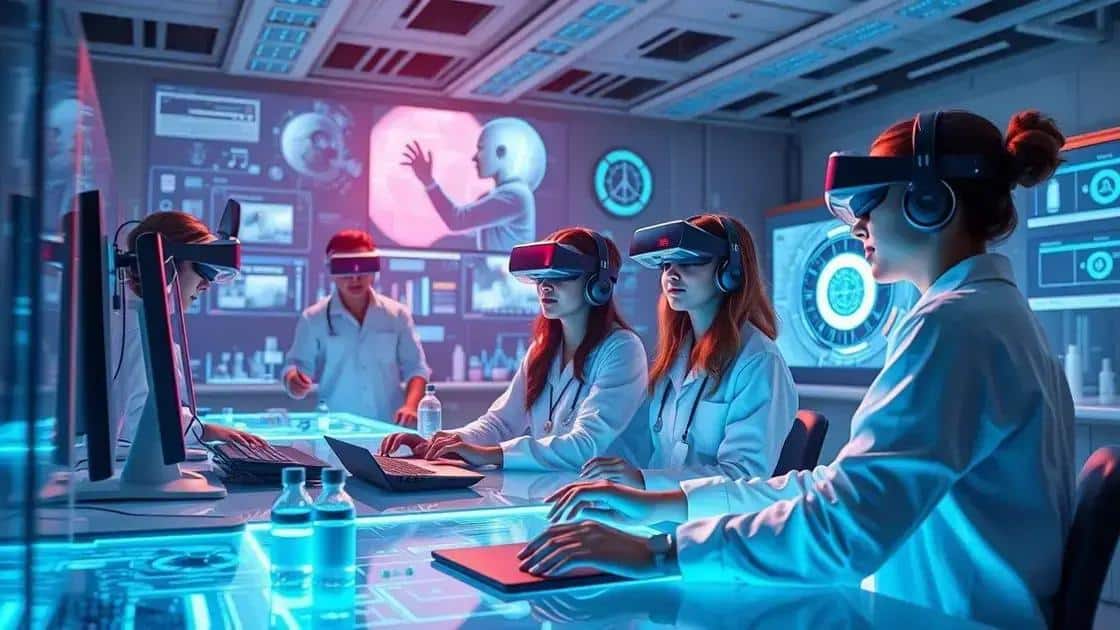
Future prospects of virtual lab simulations look bright as technology continues to evolve. The increasing integration of advanced tools is making these simulations even more realistic and effective for learning. As more educators embrace these innovative resources, the potential for virtual labs to enhance education is becoming clearer.
Advancements in technology
One critical aspect of the future is the advancements in technology such as virtual reality (VR) and augmented reality (AR). These technologies are becoming more accessible and affordable. They allow for immersive learning experiences where students can interact with 3D models and environments.
- Immersive simulations that replicate real-life labs
- Enhanced visualization of complex scientific concepts
- Interactive experiences that engage students
- Real-time data analysis and experimentation
Another exciting development is the use of artificial intelligence to create adaptive learning experiences. AI can help tailor content to individual student needs, providing personalized feedback and resources that address specific learning gaps. This tailored approach can lead to better understanding and retention of information.
Increased collaboration opportunities
Future virtual labs will also foster increased collaboration. As global connectivity improves, students from different backgrounds and geographies can work together on projects, sharing insights and findings in real-time. This collaborative element enhances learning and helps students develop important soft skills.
- Real-time collaboration tools for group experiments
- International partnerships for global learning projects
- Sharing of resources and findings across platforms
- Peer learning that enhances understanding
As these prospects materialize, the educational landscape will shift significantly. Virtual lab simulations will not only enhance the learning experience but also prepare students better for future careers. This evolution will ensure that learners are equipped with the skills they need to thrive in a rapidly changing world.
FAQ – Frequently Asked Questions about Virtual Lab Simulations
What are virtual lab simulations?
Virtual lab simulations are interactive online environments that replicate real-world laboratory experiments, allowing students to learn and experiment safely.
How do virtual lab simulations improve learning?
They enhance learning by providing engaging, hands-on experiences that help students grasp complex concepts and apply their knowledge in practical scenarios.
Can virtual labs be accessed remotely?
Yes, virtual lab simulations can be accessed from anywhere with an internet connection, making learning more flexible and accessible.
What technologies are driving the future of virtual labs?
Advancements in artificial intelligence, virtual reality, and augmented reality are shaping the future of virtual lab simulations, making them more interactive and personalized.


